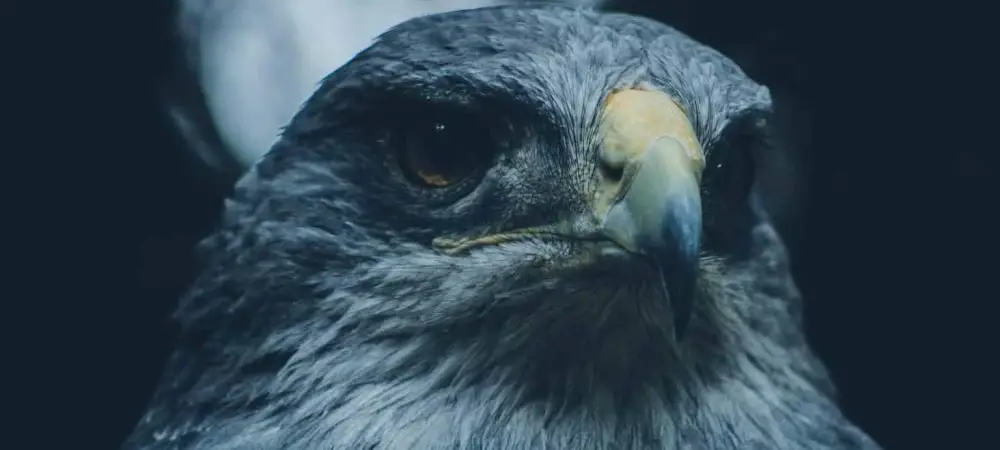
Want to learn more? This book on the Birds of Prey of North America is a fantastic read!
New Hampshire is a state in the United States’ New England region. This state is recognized for its small, cozy towns and its abundant wilderness areas.
New Hampshire is home to White Mountain National Forest, Mount Washington, and part of the Appalachian Trail.
Its humid continental climate means that this state has warm, humid summers with cold, snowy winters. New Hampshire also boasts 93 state park properties offering incredible recreational opportunities.
This state’s expansive landscape makes it a preferable home among a plethora of wildlife, especially hawks!
A considerable 8 species of hawk are often spotted throughout the state of New Hampshire.
You’re most likely to observe the Red-tailed hawk, although the Rough-legged hawk may not be readily spotted.
Read on to learn more about each species and their unique characteristics.
Want to attract birds of prey to your yard? Take a look at our article!
What Hawks can be seen in New Hampshire?
Table of Contents
1. Sharp-Shinned Hawk
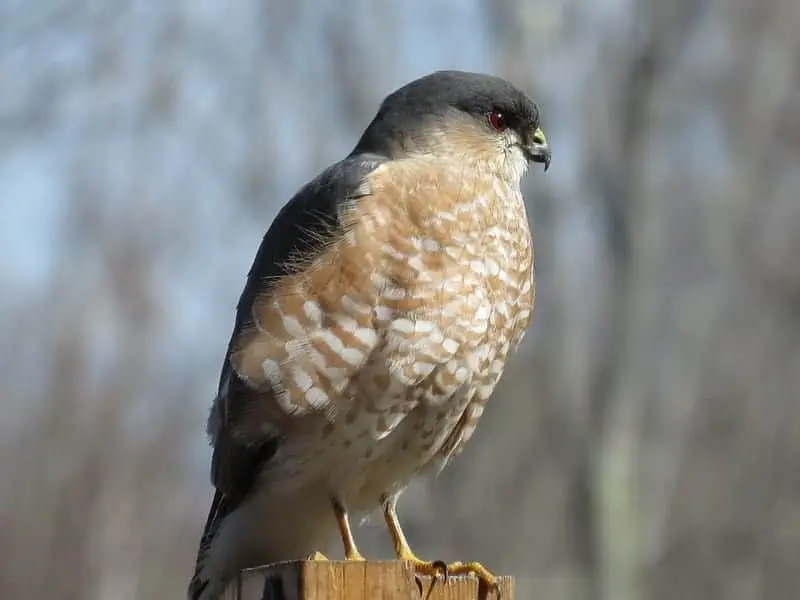
“Sharp-Shinned Hawk” by ‘Dennis Murhpy‘ is licensed under CC BY 2.0
Frank Lambert, XC274807. Accessible at www.xeno-canto.org/274807.
Wingspan
43-56cm
Weight
87-218g
Life Expectancy
3 years
Diet
Robins and Thrushes
Sharp-shinned Hawks are very small birds, and in fact, they’re often referred to as the smallest hawks in The United States even though the females are larger than the males.
These adult hawks have bluish-gray feathers above, with copper-colored feathers on their white underparts.
The juvenile hawks of this species are typically streaked brown with white underparts. Take note of this species’, short but rounded wings and their contrasting square tails.
These hawks can be readily found throughout the state of New Hampshire in thick forests, nesting in coniferous trees, especially between March and June.
They’ve also been observed visiting suburban backyard bird feeders seeking their prey. Additionally, you may observe Sharp-shinned Hawks during the winter months as they migrate from northern parts of the state.
Sharp-shinned Hawks are recognized by two interesting calls. One sound is a repeating ‘ki-ki’ call, and the other is a high-pitched, sharp scream.
2. Cooper’s Hawk
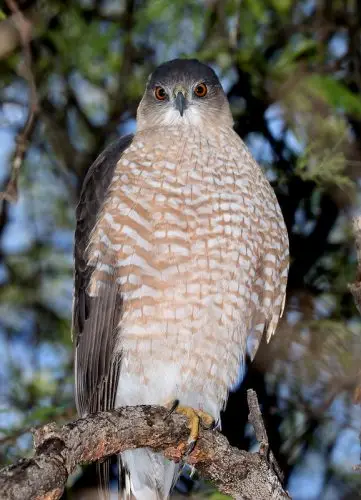
Sue Riffe, XC611811. Accessible at www.xeno-canto.org/611811.
Wingspan
62-90cm
Weight
330-680g
Life Expectancy
Up to 12 years
Diet
Small Birds, Mice & Squirrels
Cooper’s Hawks are a small-medium sized species, and the males are known to be quite smaller than the females.
The adult hawks are an overall gray color with pastel, orange-colored barring on their chests. The immature hawks, however, are usually brown.
This species is also known for having small wings and round tails. These hawks are year-round residents in New Hampshire, although they are not as common in the northern region of the state.
They take habitat in hardwood, softwood and mixed forests, which also includes woodlots and suburban forests.
You’ll most likely spot them in March throughout July as they are more noticeable during breeding season.
You can easily recognize this species because of the loud, “cak-cak-cak” sound they both males and females tend to give during breeding season.
The call usually lasts anywhere from 2-5 seconds long, but the hawks tend to be silent the remainder of the year.
3. Northern Goshawk
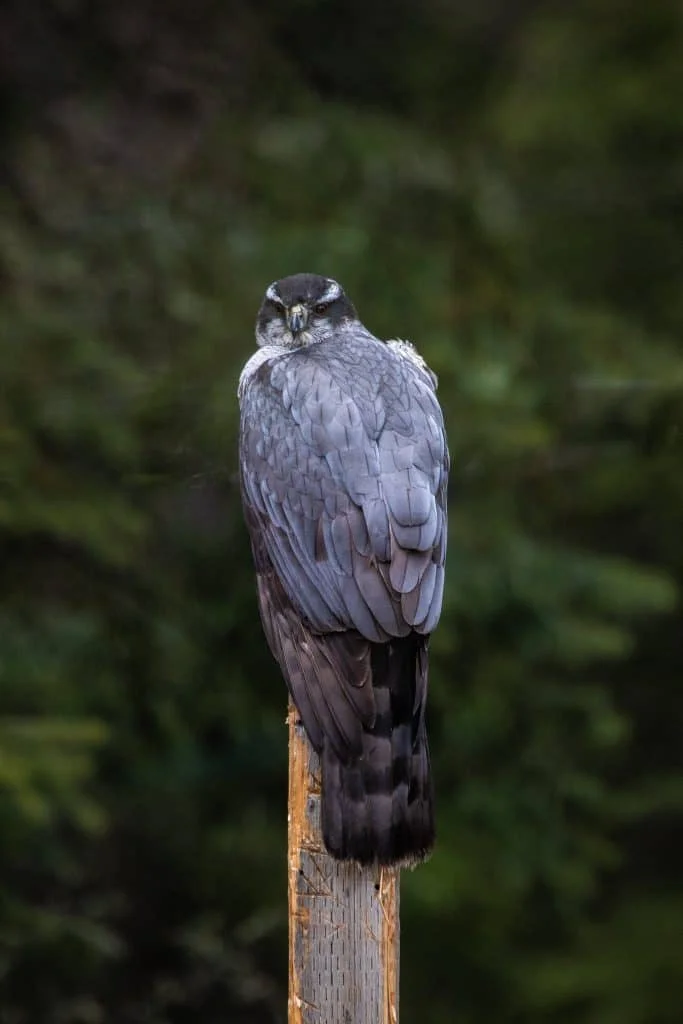
Peter Stronach, XC623479. Accessible at www.xeno-canto.org/623479.
Wingspan
89-127cm
Weight
631-1364g
Life Expectancy
7 Years
Diet
Mammals, reptiles & insects
Northern Goshawks are medium to large sized birds with pale gray feathers, though the immature hawks are brown.
Goshawks are quite bulky with large, round wings and long tails. The adults also have a slight gray cap with a bold white streak on their faces.
Though Northern Goshawks are secretive birds, they are year-round residents in New Hampshire. They prefer to take habitat in large, dense forests among coniferous trees.
Breeding season for Goshawks takes place during the spring months, which is the time you will most likely spot them.
These birds are very defensive when it comes to their territories and families, so it’s important to use caution when trying to spot them. You’ll likely hear these hawks as they give a rapid ‘ki-ki-ki’ repetition call.
4. Red-Shouldered Hawk
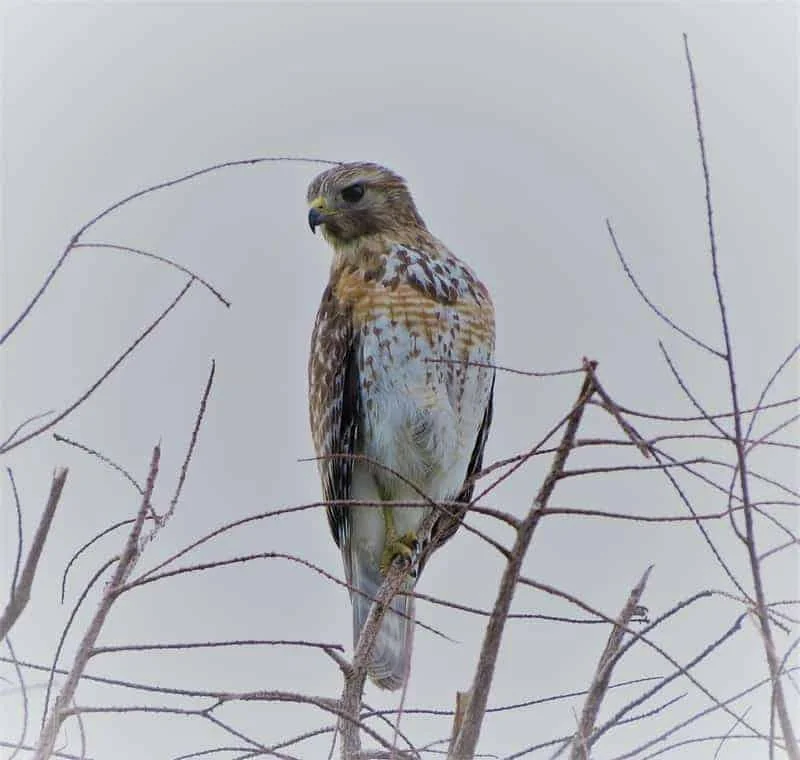
Christopher McPherson, XC602509. Accessible at www.xeno-canto.org/602509.
Wingspan
94-111cm
Weight
486g-774g
Life Expectancy
2 years
Diet
Small mammals, reptiles & amphibians
Red-shouldered Hawks are considered a large species of hawk that are admired for their deep, reddish brown colored feathers.
The mature birds are known to have intricate patterns on their wings and underparts. However, the immature hawks are brown with white underbellies.
This species can easily be found year-round in New Hampshire’s southern regions. Throughout the majority of the state however, these birds are only around during mating season in warmer months.
You’ll most likely see them in late spring and summer near their nests close to marshes and other wet areas like swamps and rivers.
At times, they can also be seen in forests, perched on trees in search of food. Red-shouldered Hawks are known for their loud, repetitive ‘kee-aah’ call. It’s also worth mentioning that the second note is lower in pitch than the first.
5. Broad-Winged Hawk
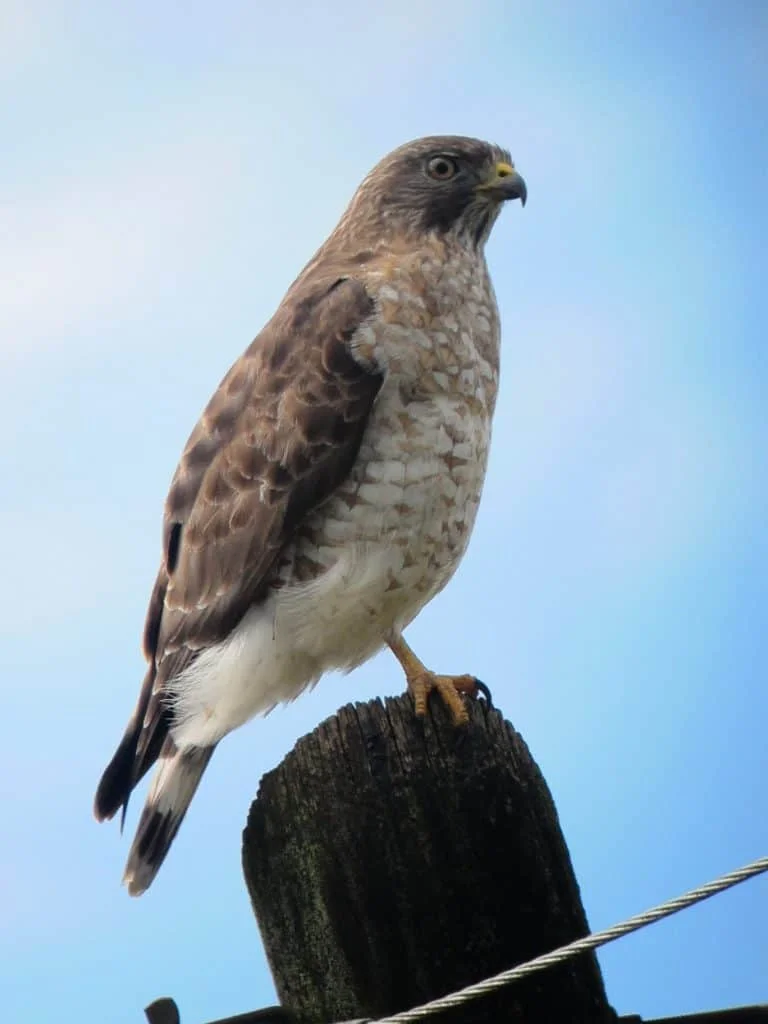
“Broad Winged Hawk” by ‘Felipe Uribe‘ is licensed under CC BY 2.0
Meena Haribal, XC479508. Accessible at www.xeno-canto.org/479508.
Wingspan
81-100cm
Weight
265g-560g
Life Expectancy
Up to 20 years
Diet
Small mammals & insects
Broad-winged Hawks are a small to medium sized species.
The adult birds are known for their rust-colored feathers on their upperparts with some black and white barring on their short tails.
Interestingly, the immature hawks do resemble adults, although their feathers are lighter and their tails are thin. These hawks are common breeders throughout the state of New Hampshire.
In fact, you’ll likely observe a large number of them during September and October during their fall migration.
Broad-winged hawks prefer to take habitat in hardwood and mixed forests close to lakes, ponds and marshes.
They can also be observed perching on forest edges or flying over fields and other open areas.
You’ll often hear high-pitched cries and whistles during the summer months when the hawks communicate with one another during nesting season.
6. Red-Tailed Hawk
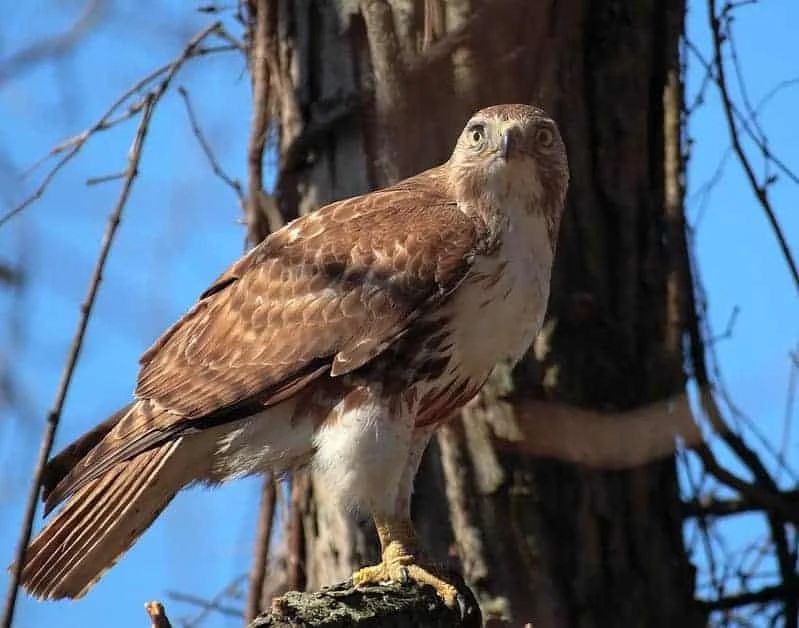
Peter Ward and Ken Hall, XC603736. Accessible at www.xeno-canto.org/603736.
Wingspan
114-133cm
Weight
900-1460g
Life Expectancy
10-15 years
Diet
Small mammals, mice & voles
Red-tailed Hawks are recognized as large birds, in fact they are the second largest hawk species in North America, while they are the most common hawk species in the region.
These birds are named for their incredibly brilliant red tails, though they are pale on their underparts.
It’s important to know that immature hawks of this species don’t have red tails.
These hawks are year-round residents in southern New Hampshire, typically breeding in central and northern regions in early spring. In fact, you may be able to spot them during their in-flight courtship rituals when males attract their female mates.
They usually nest in trees among open fields during the spring and summer months as they scope out their prey. These hawks can be identified by their hoarse call that sounds like ‘kee-eeeee-arr’.
7. Rough-Legged Hawk
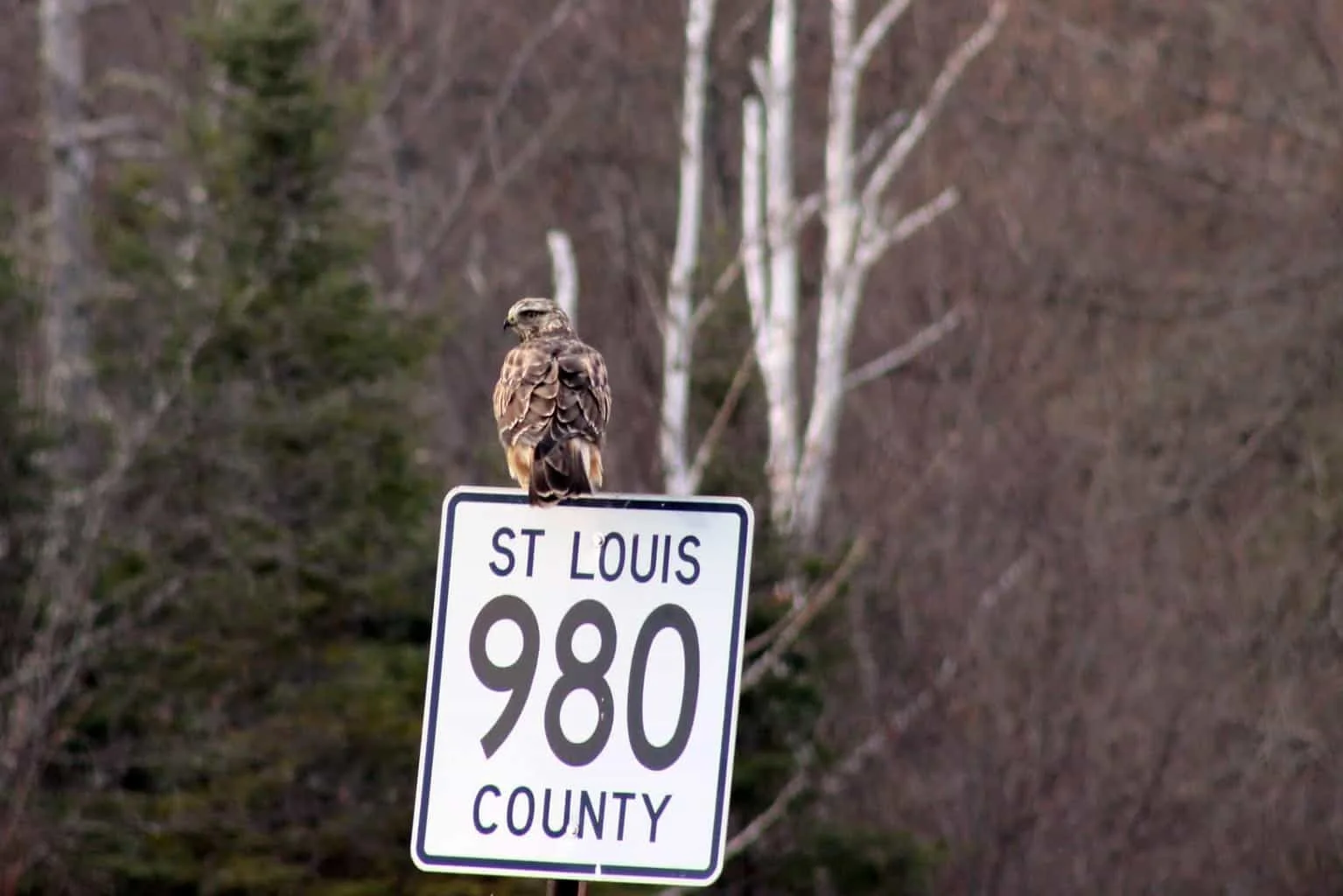
Stein Ø. Nilsen, XC580104. Accessible at www.xeno-canto.org/580104.
Wingspan
132-138cm
Weight
715-1400g
Life Expectancy
Up to 18 years
Diet
Small rodents
Rough-legged Hawks are medium-large hawks with long, thin wings, and feathered legs.
These hawks can vary in feather patterns, ranging from pastel feathers to dark feathers above with bright underparts.
Rough-legged Hawks can be observed in New Hampshire during the winter months, although they are more difficult to find than other species of hawk.
The number of hawks actually depends on the region’s food supply, in which these hawks will circle in the sky to stalk their prey.
Rough-legged Hawks prefer to take habitat in open fields, plains, marshes, and even farmland during the winter.
Their nests are often made from bulky masses of sticks, and sometimes even the bones of large animals.
You’ll easily identify these hawks by their familiar cat-sounding mew, and their hiss that somewhat resembles a snake.
8. Northern Harrier
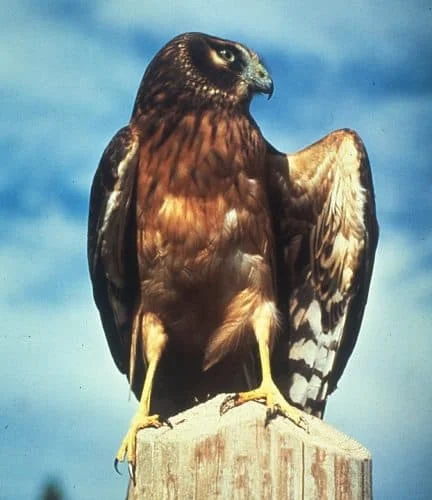
Bruce Lagerquist, XC329772. Accessible at www.xeno-canto.org/329772.
Wingspan
120cm
Weight
390g
Life Expectancy
16 years
Diet
Rodents and small birds
Northern Harriers are a medium-sized species of hawk and have prominent long tails and wings.
When it comes to distinctive facial characteristics, Northern Harriers are often compared to owls.
The mature males of this species have gray upperparts with black feathers on their wingtips, although they have mostly white underparts.
The females and immatures are streaky brown, but have similar whitish underparts. Northern Harriers have a notable breeding population in the northern region of New Hampshire.
The ideal time to spot one of these hawks is from April to July near open areas such as grasslands.
You can identify them by their ground nests in dense grassy vegetation, especially in wet areas.
You’ll easily recognize the males due to their very high octave fast series of ‘kek-kek’ calls. The females can be distinguished by their high-pitched squeal during breeding season.

More Articles.
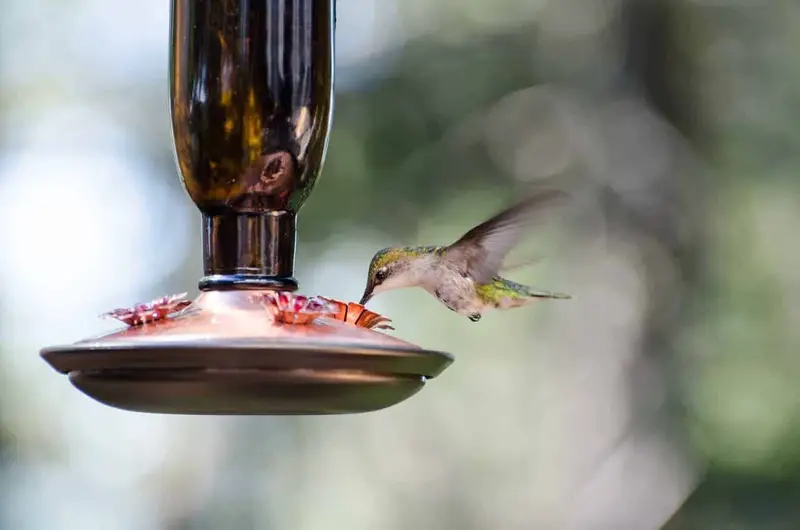
Best Hummingbird Feeders for 2020
Nectar bird feeders are well-known for attracting a variety of adorable birds and for saving
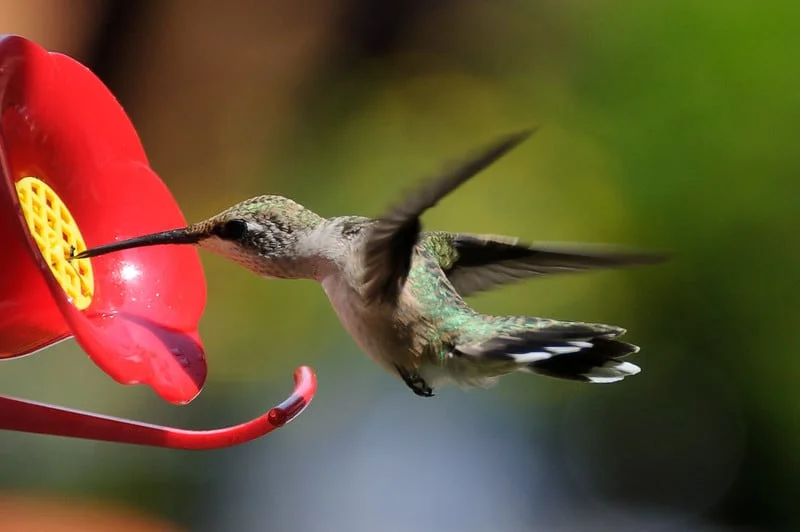
What time of day should you feed hummingbirds?
Hummingbirds are most known to prefer to visit a feeder and flowers as the sun
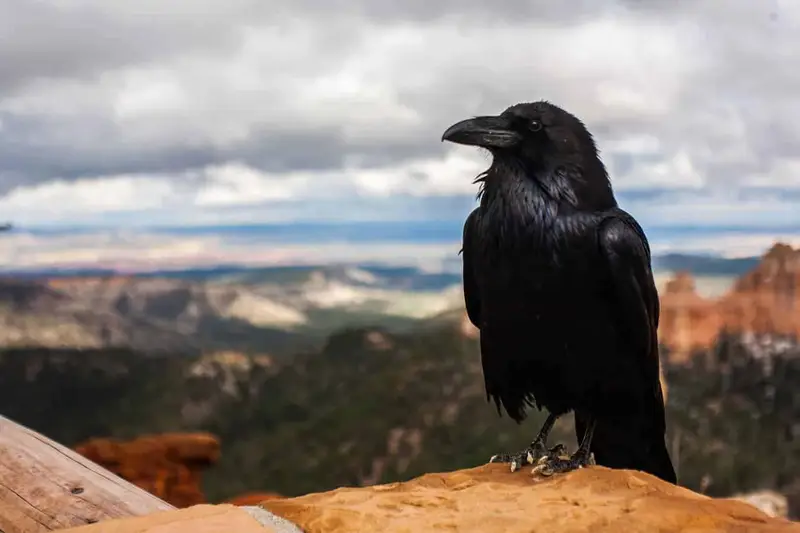
How to Attract Crows to your Yard?
Crows are one of the most iconic birds across the world; instantly recognizable by their

About Us
We are avid bird-watchers who recently retired, allowing us more time to travel the world. Fortunately, we have managed to visit numerous countries around Europe, Asia, and America. Watching and photographing birds has been a passion for many years and we are making the most of the extra time on our hands!
